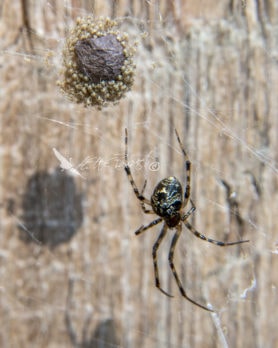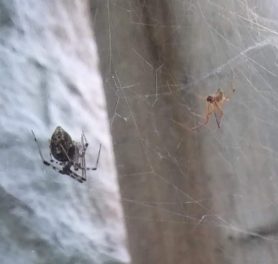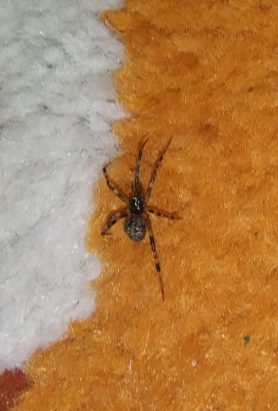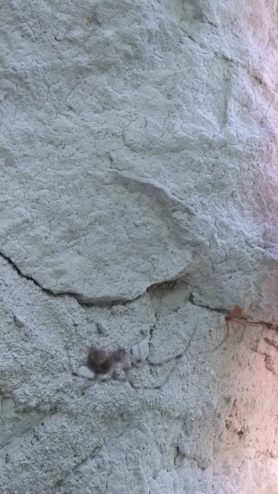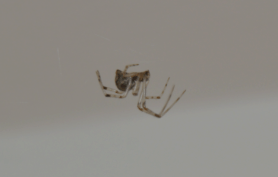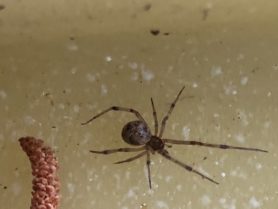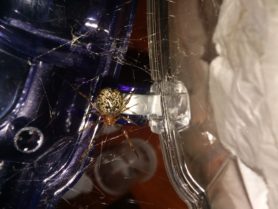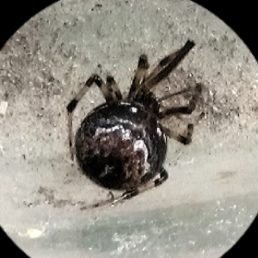Taxonomic Hierarchy
- Kingdom: Animalia
- Phylum: Arthropoda
- Class: Arachnida
- Order: Araneae
- Suborder: Araneomorphae
- Family: Theridiidae
- Genus: Parasteatoda
- Species: Parasteatoda tepidariorum
Common Name (AAS )
)
Common House Spider
Other Common Names
American House Spider, Cobweb Spider, Cob Web Spider, Comb-footed Spider, Tangle-web Spider, Gumfoot-web Spider
Author
Carl Ludwig Koch, 1841
Primary Colors
Sightings Overview
There have been 71 confirmed sightings of Parasteatoda tepidariorum (Common House Spider), with the most recent sighting submitted on June 5, 2020 by Spider ID member detcord. The detailed statistics below may not utilize the complete dataset of 71 sightings because of certain Parasteatoda tepidariorum sightings reporting incomplete data.
- Web: 74% of the time, Parasteatoda tepidariorum spiders are sighted in a spider web (Sample size: 70)
- Sex: 19 female and 18 male.
- Environment: Parasteatoda tepidariorum has been sighted 37 times outdoors, and 35 times indoors.
- Outdoors: Man-made structure (32). Low foliage (1). Ground layer (1). Under rock or debris (2). Freshwater river, lake, stream (1).
Location and Range
Parasteatoda tepidariorum (Common House Spider) has been sighted in the following countries: Canada, United States.
Parasteatoda tepidariorum has also been sighted in the following states: Alabama, California, Georgia, Illinois, Indiana, Iowa, Kentucky, Louisiana, Maine, Mississippi, Missouri, New Hampshire, New York, Ohio, Oregon, Pennsylvania, South Carolina, Tennessee, Texas, Virginia, West Virginia, Wisconsin.
Seasonality
Parasteatoda tepidariorum has been primarily sighted during the month of May.
- January: 2
- February: 4
- March: 12
- April: 13
- May: 16
- June: 6
- July: 5
- August: 2
- September: 2
- October: 7
- November: 2
- December:
Additional Remarks
- Sometimes mistaken for a “brown widow,” Latrodectus geometricus.
- Other species in genus Parasteatoda can be mistaken for P. tepidariorum, too; genus Tidarren is also fairly similar in color and shape.
- This species is quite the athlete, often subduing prey that is much, much larger than itself. We have personally witnessed prey to include other spiders such as the foldingdoor spider, Antrodiaetus pacificus, and even small lizards. Guarisco (1988) documented this spider feeding on a Sphodros fitchi, a species of purseweb spider.
- Egg sacs are made of brown, papery-looking silk and shaped like a teardrop, about 6-9mm in diameter with anywhere from 100-500 eggs inside. Females can produce as many as 17 egg sacs in their lifetime (average is more like ~10).
- Males are much smaller than the females and are more orange-red in coloration.
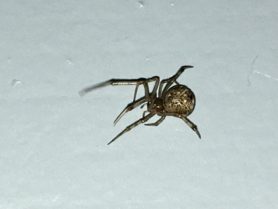 The spider species Parasteatoda tepidariorum, commonly known as Common House Spider, belongs to the genus Parasteatoda, in the family Theridiidae. Parasteatoda tepidariorum spiders have been sighted
The spider species Parasteatoda tepidariorum, commonly known as Common House Spider, belongs to the genus Parasteatoda, in the family Theridiidae. Parasteatoda tepidariorum spiders have been sighted 